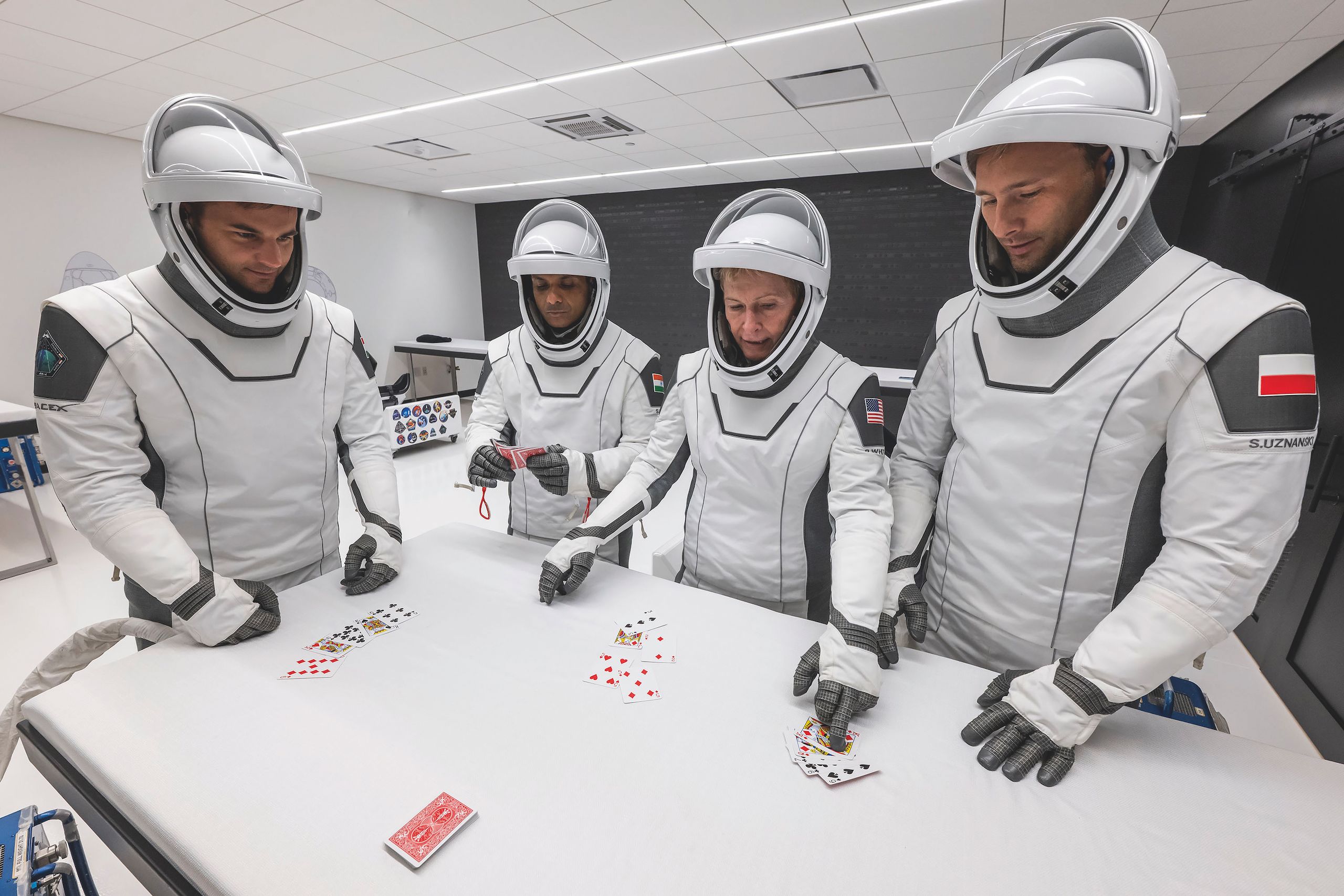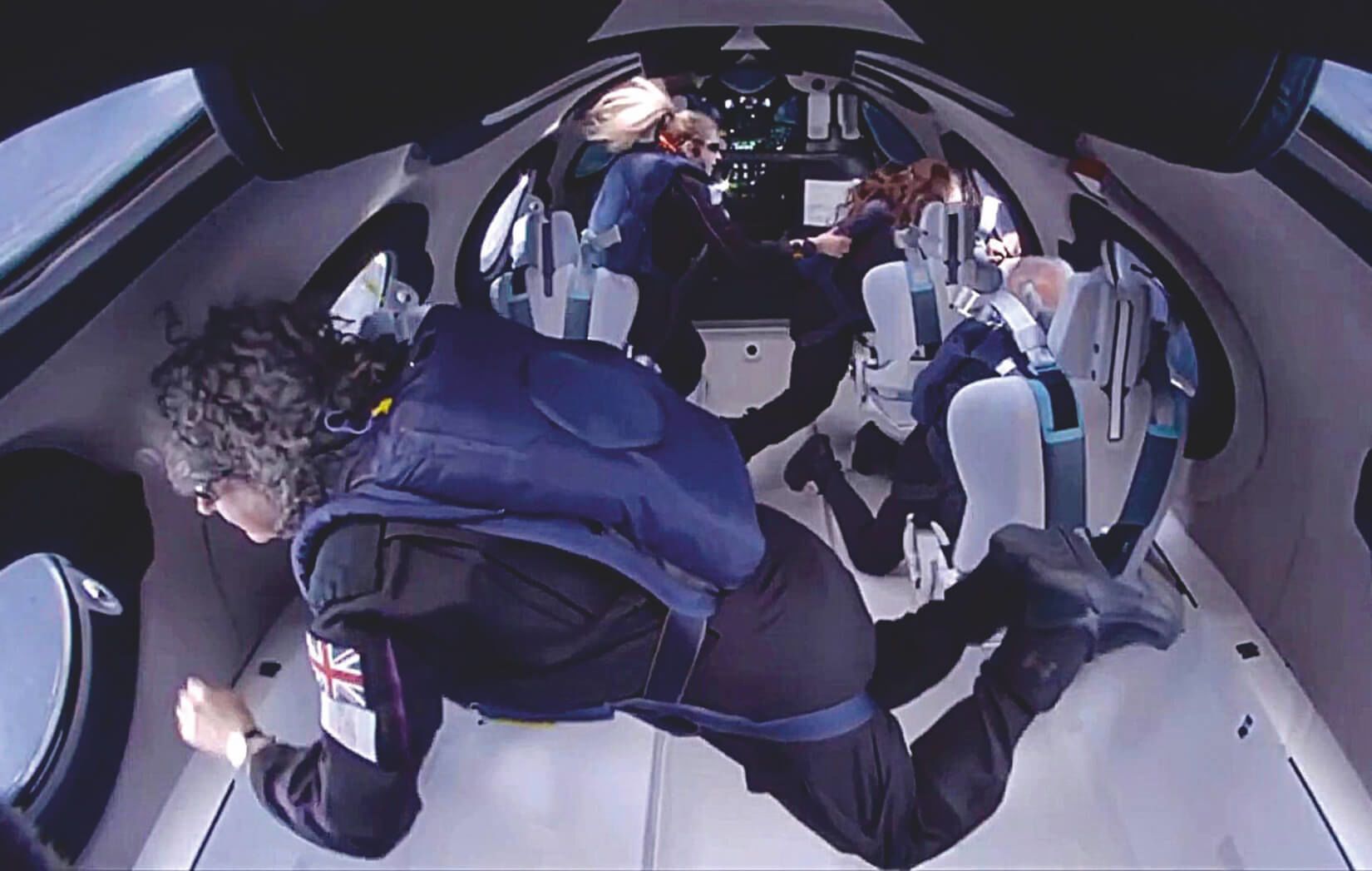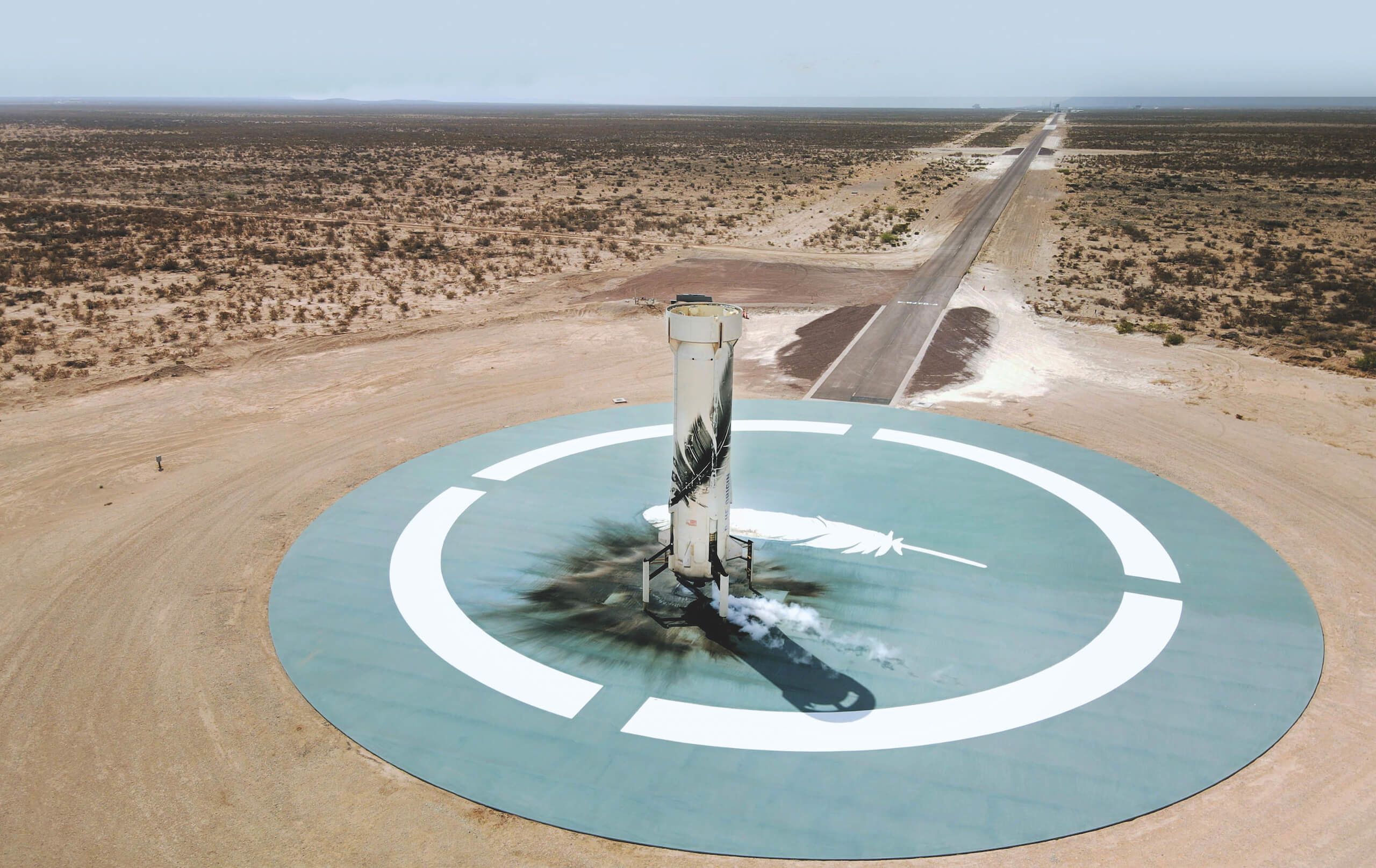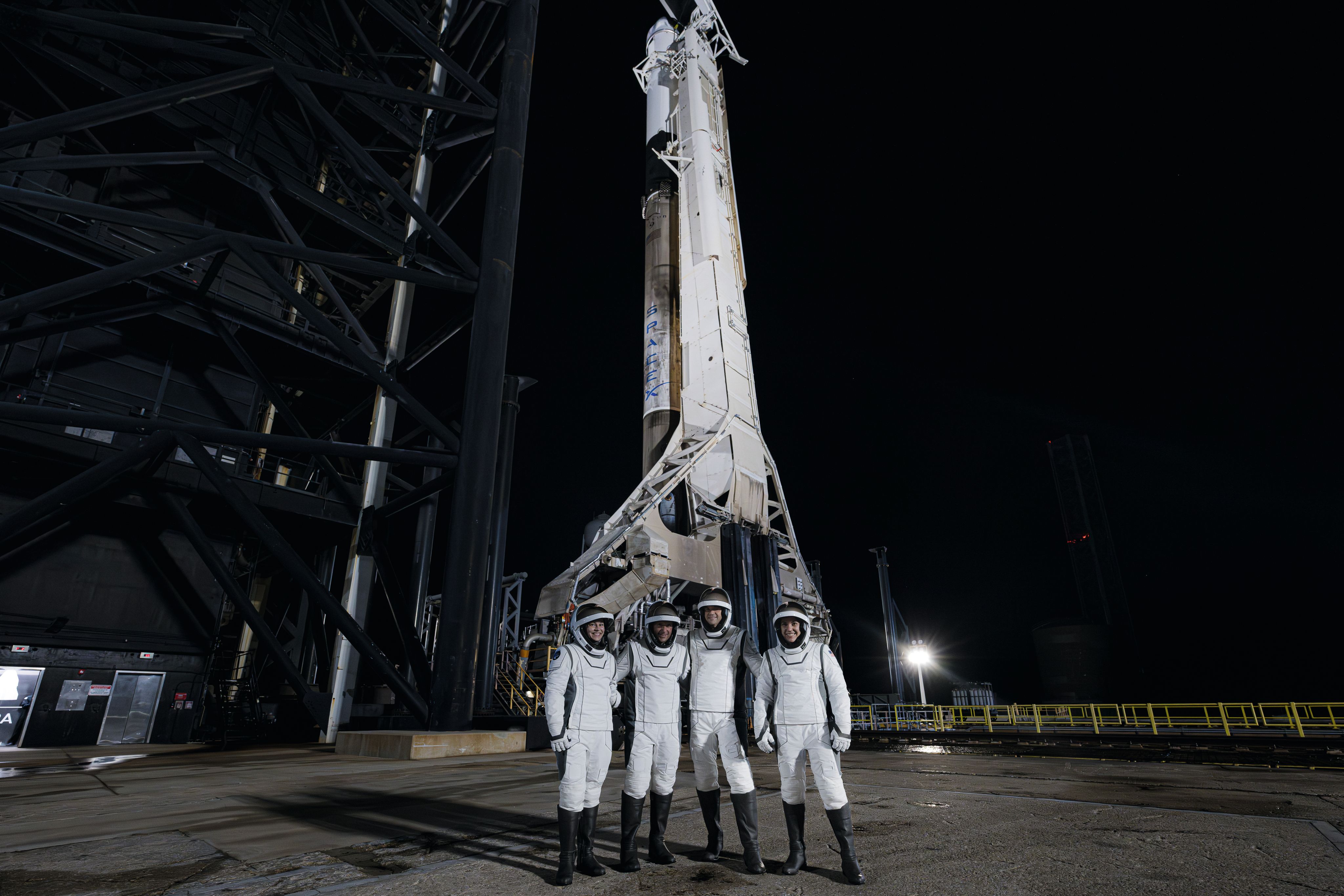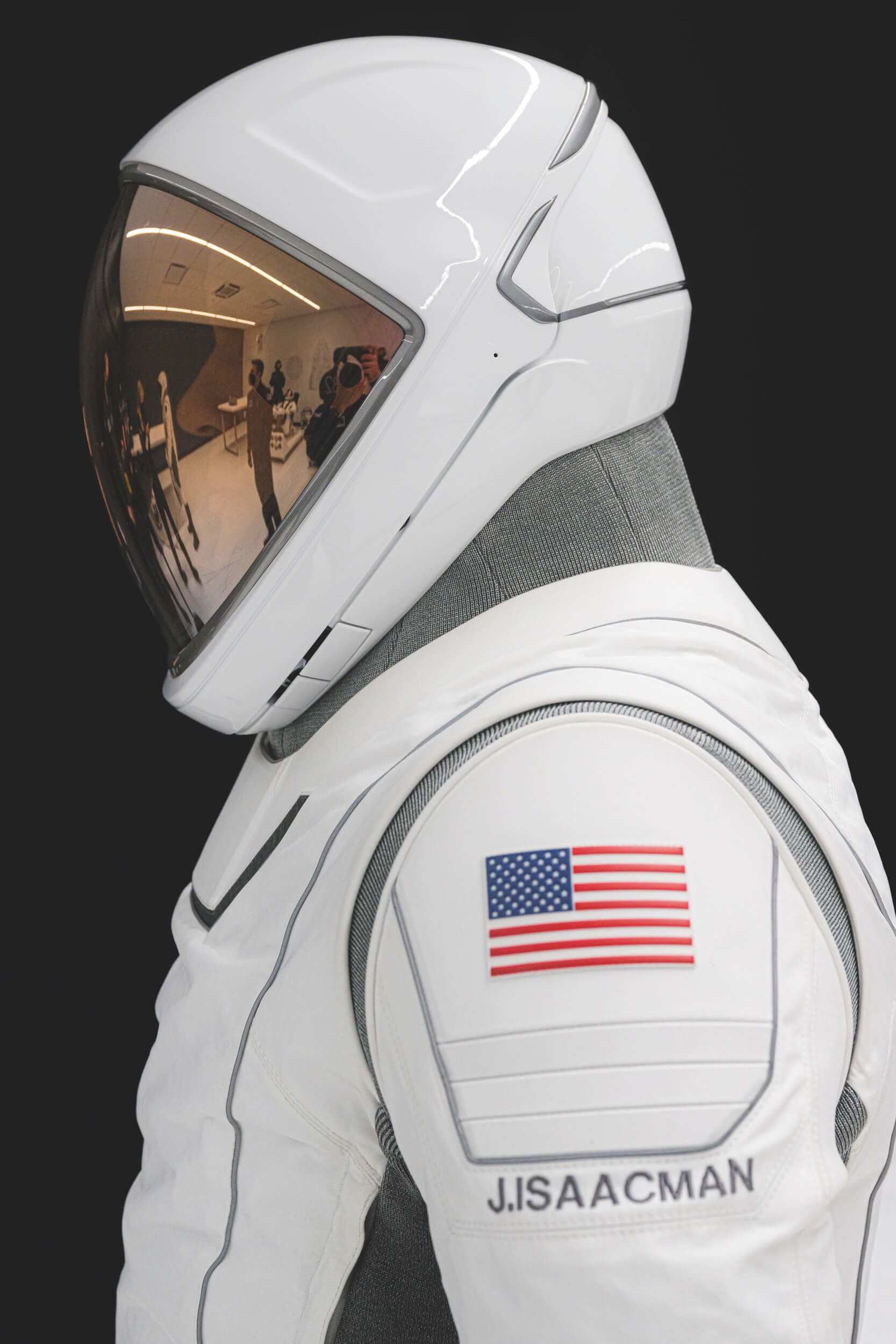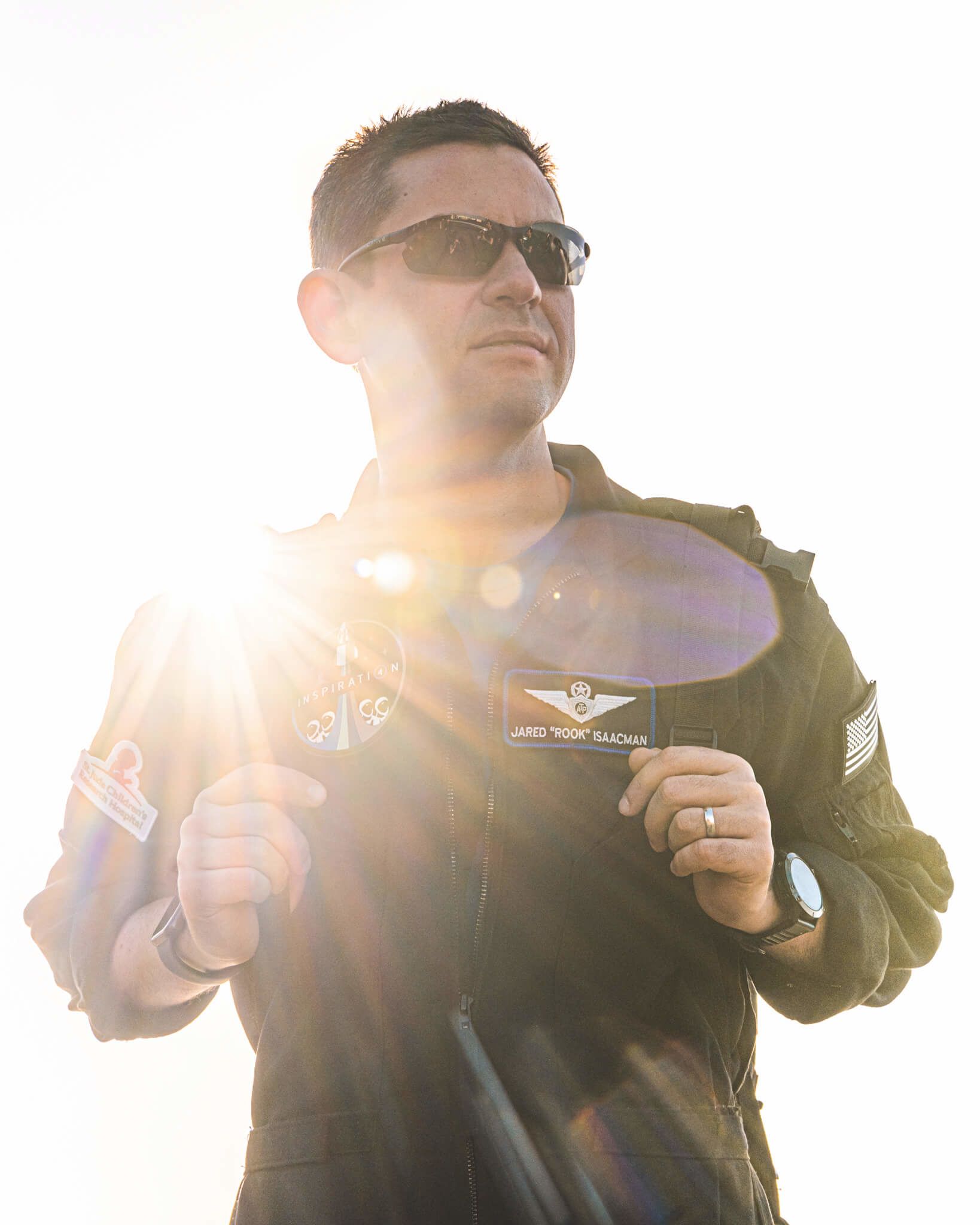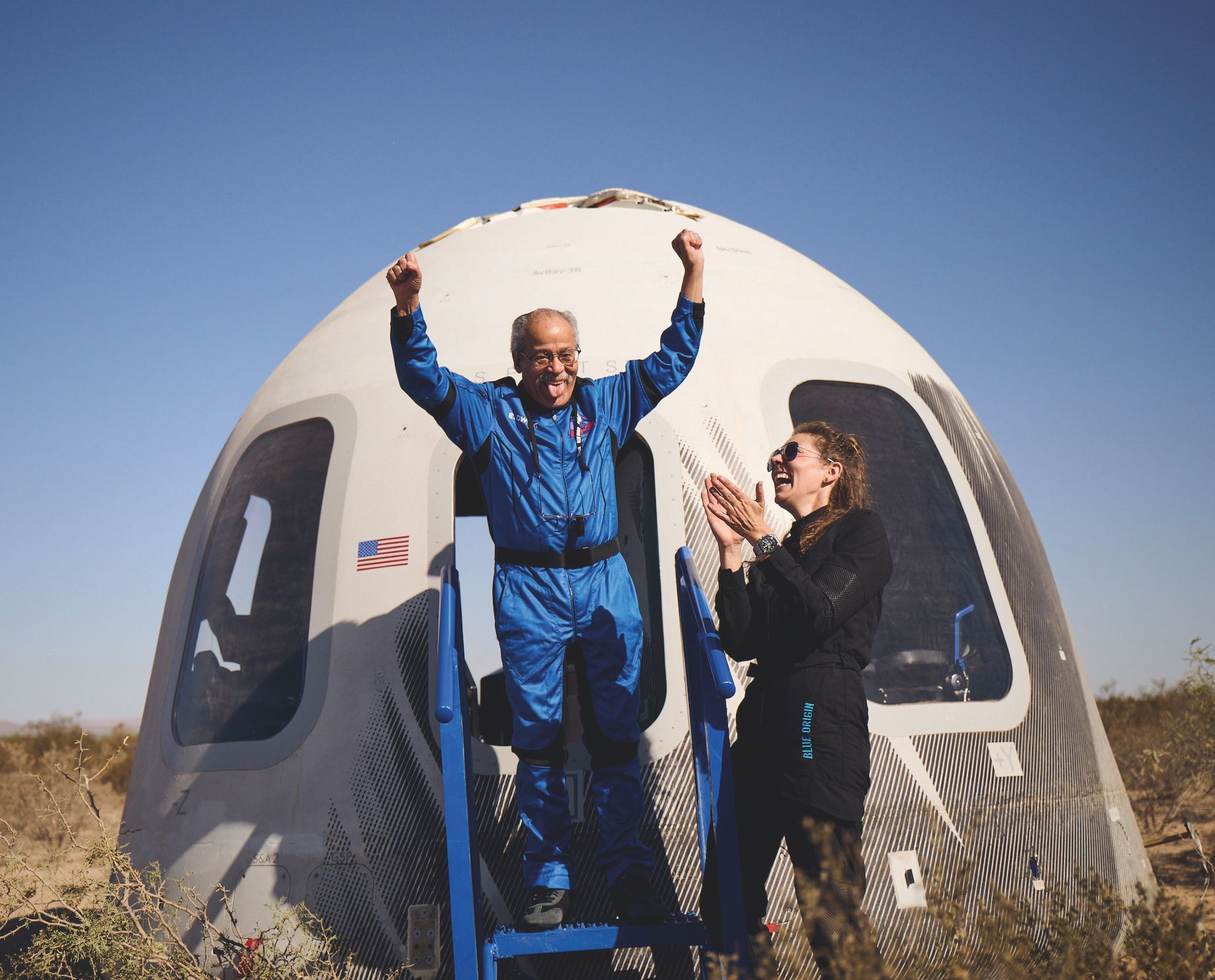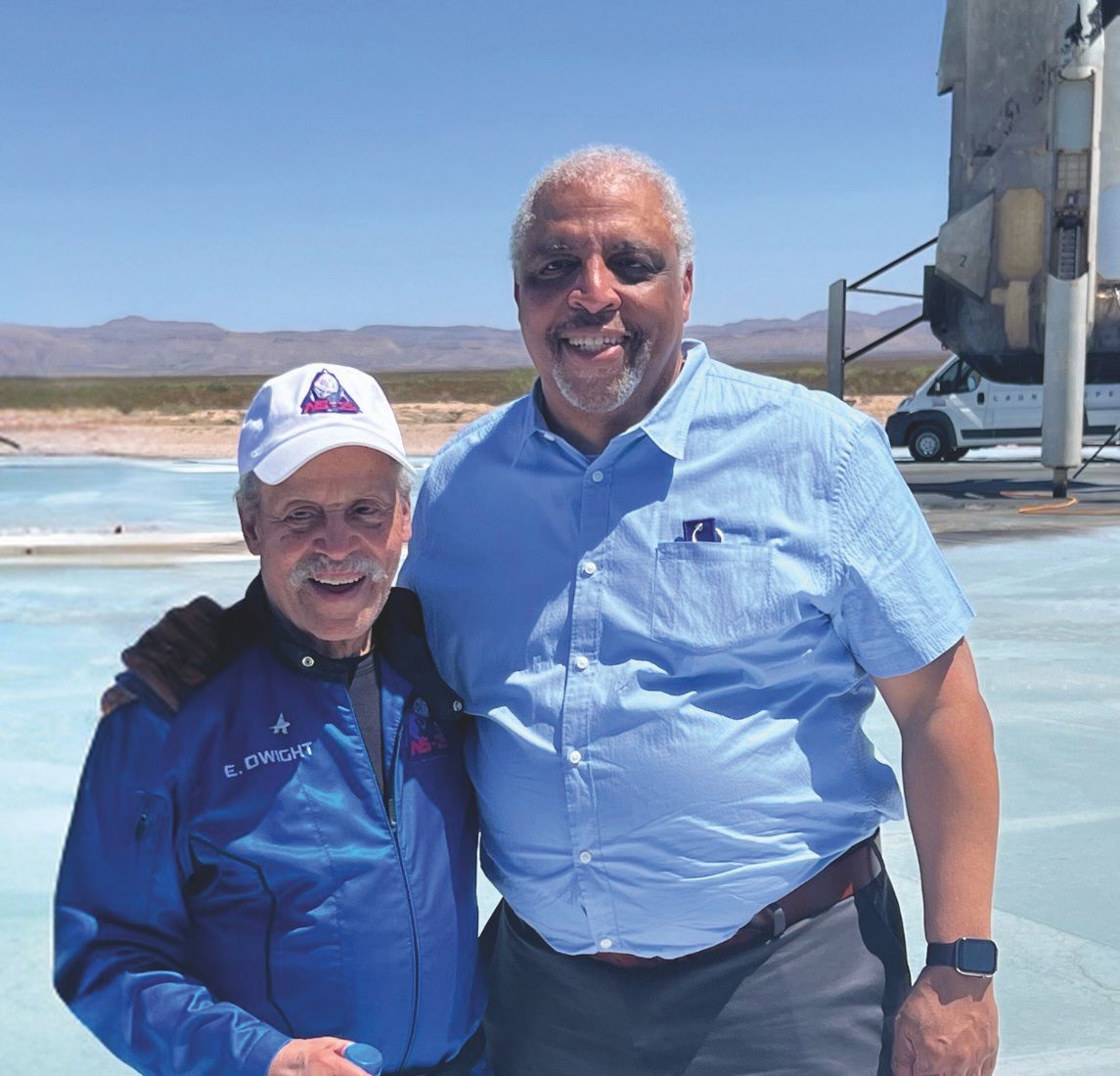REACH FOR THE
STARS
Once the preserve of highly trained military, space flight is now open to anyone – for a price. BOAT explores...
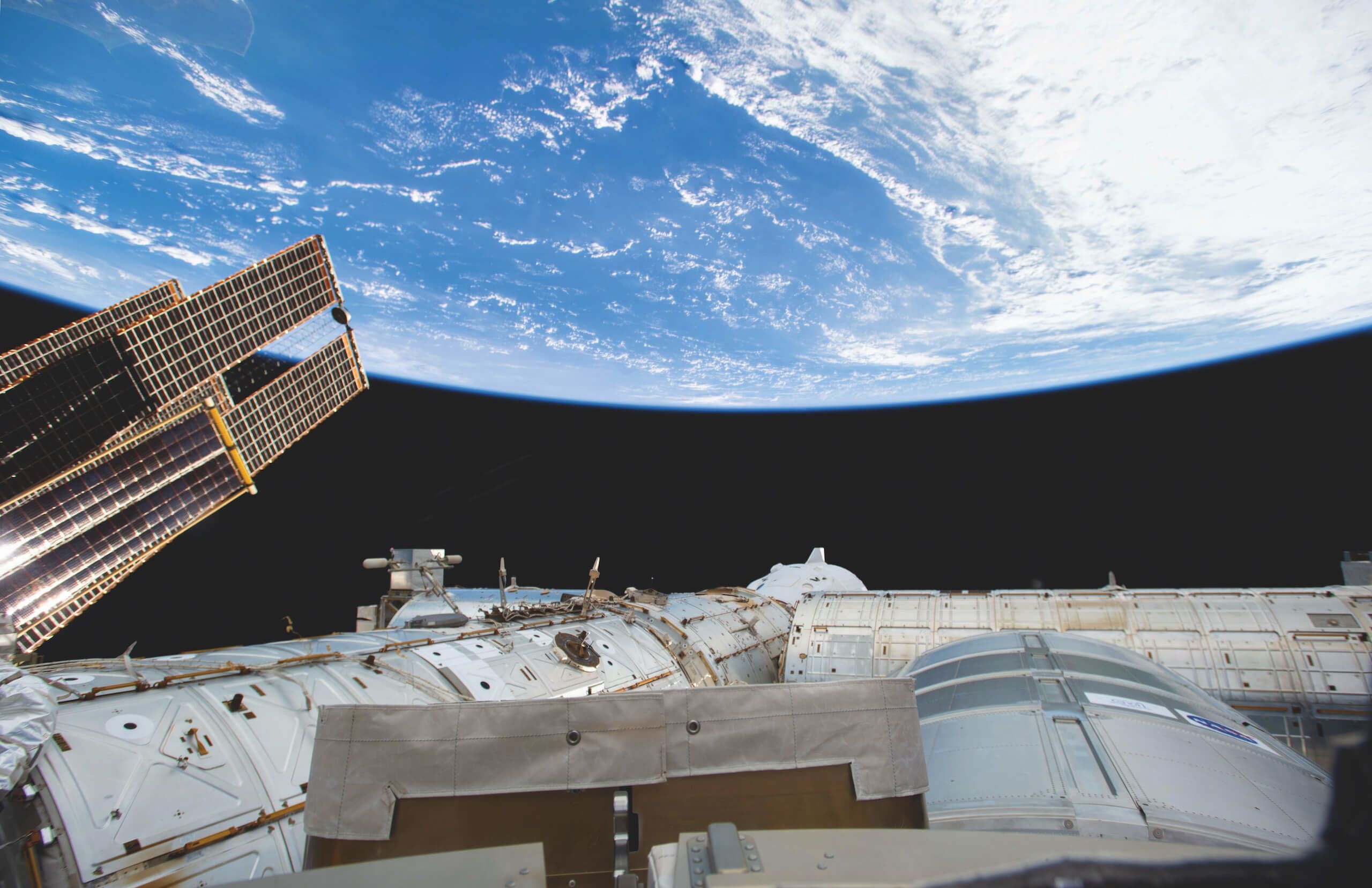
Crossing the final frontier has never been more achievable. Space writer Sarah Cruddas explains why...
POLARIS PROGRAM: JOHN KRAUS
Axiom Mission 4 splashed down in the Pacific on 15 July 2025, returning four private crew from 20 days in space. It was the 18th crewed mission into space so far this year. Once the preserve of highly trained military, space flight is now open to anyone – for a price.
COURTESY OF SPACEX (l-r) Private crew of Axiom 4, who spent 18 days on the International Space Station, the crew playing cards as part of their training and the Axiom Space hangar
Even 10 years ago it was the stuff of science fiction. Something that those who remember the first Space Race of the 1960s believed had become a forgotten promise. A retro futuristic dream, living in the history books, with the likes of flying cars and personal jetpacks.
But like so many endeavours in pursuit of new frontiers, perhaps we just got the timing wrong. Today, space exploration is no longer the preserve of governments, nor a niche few nations, but a private pursuit, enabling a new type of astronaut to “slip the surly bonds of earth”, as the pilot and poet John Gillespie Magee Jr put it.
“Looking down on earth, the first thing that struck me was the intensity of the blue. It was astonishing, a hue I had never witnessed before,” describes Trevor Beattie, a British advertising executive and film producer who travelled to space as a paying passenger with Virgin Galactic in 2023.
“That laid against the black void of space – again, the black seemed deeper than I can describe, blacker than any black. A deep three-dimensional, eternal void.”
"The black seemed deeper than I can describe, blacker than any black. A deep three-dimensional, eternal void."
"The black seemed deeper than I can describe, blacker than any black. A deep three-dimensional, eternal void."
British advertising entrepreneur and film producer Trevor Beattie was a paying passenger with Virgin Galactic in 2023 IMAGE: VIRGIN GALACTIC
Beattie is one of a small but steadily growing group of commercial space-flight participants – private astronauts, if you will. They might not have the military training and precise calibre of The Right Stuff (precocious courage, skill and mental fortitude) that the first space pioneers had, but who have nonetheless made a journey that a couple of generations ago was deemed impossible for any person or machine.
VIRGIN GALACTIC Trevor Beattie on board in 2023
VIRGIN GALACTIC Trevor Beattie on board in 2023
“Being in space was a childhood dream come true. I had been chasing space my entire life,” says Sian Proctor, an artist and geology professor who spent three days orbiting the Earth aboard SpaceX’s Crew Dragon as part of the groundbreaking Inspiration4 all-civilian mission in September 2021.
Without perhaps even realising it, we are living in that Space Age dreamed up in the mid-twentieth century. This is an era where rocket boosters successfully landing back on Earth are now more synonymous with SpaceX and perhaps Blue Origin than television shows such as Thunderbirds. And where a trip to space is within reach of anyone who has the cash, and perhaps the bravery, to sit atop a rocket and launch beyond our Earth, even if just for a matter of minutes.
Of course, the private pursuit of a new frontier is nothing new. Throughout history, when we have pushed the limits of where humans could go, government-funded expeditions have gone first and then private industry has followed.
Think of these twenty-first century private space missions as a modern-day Mayflower setting sail to the New World – following in the wake of Columbus whose voyage was funded by the king and queen of Spain. The only thing different today is the playing field.

COURTESY LIVINGSTON HOLDER: WIKIMEDIA Livingston Holder
COURTESY LIVINGSTON HOLDER: WIKIMEDIA Livingston Holder
"This [new-found interest] opens up an entirely new world of innovation and exploration that cannot be achieved when serving government-only missions"
Livingston Holder is a former US Air Force astronaut who had been due to fly to space before the Challenger shuttle disaster of 1986. Today he is the co-founder of private space-flight company Radian Aerospace, which is developing a single-stage-to-orbit spaceplane.
“Historically, access to space was very limited. Only wealthy nations could afford the research and development funding to figure out how to get to space and therefore the missions that those governments wanted to do were the only operations conducted. Over time the technology and know-how has spread, lowering the cost of conducting space flight.”
From Elon Musk to Jeff Bezos – who had talked of space colonies and hotels during his high-school valedictorian speech in 1982 – to lesser-known power players and market-creating angel investors, the ecosystem at the turn of the century brought together the right minds, with the right access to capital at the right time for commercial space travel to – no pun intended – take off.
This new-found interest took space from a destination reachable only by wealthy nations to a place to do business. “This opens up an entirely new world of innovation and exploration that cannot be achieved when serving government-only missions,” continues Holder.
“From satellite communications to Earth observation to taking scientists and engineers to commercial space stations to inventing the new materials and medicines that cannot be produced under the pressure of gravity that we all have to deal with while on the surface of Earth.”
But it is seeing humans travel to space as part of this new space era that has arguably sparked the greatest intrigue, excitement and public discourse.
But it is seeing humans travel to space as part of this new space era that has arguably sparked the greatest intrigue, excitement and public discourse.
COURTESY RADIAN AEROSPACE Radian Aerospace’s spaceplane
Take the sub-orbital flights with Blue Origin and Virgin Galactic (which do not orbit the Earth but instead give those on board 10 to 15 minutes in space), or groundbreaking privately funded expeditions, such as the Fram2 – where, in April 2025, four civilians spent 3.5 days orbiting the earth’s poles for the first time ever, while conducting experiments like the first x-rays of a human in orbit.
“There is simply no substitute for sending people,” explains Seth Shostak, senior astronomer at Californian non-profit research organisation the SETI Institute, focused on the search for extraterrestrial intelligence.
“Aside from the various practical considerations, people write books, give talks, etc and convey these activities in a way that’s relatable and even profound.”
BLUE ORIGIN Blue Origin’s first crewed flight with Jeff Bezos and his brother marked the first time a suborbital spacecraft carried a paying customer
BLUE ORIGIN Blue Origin’s first crewed flight with Jeff Bezos and his brother marked the first time a suborbital spacecraft carried a paying customer
It was 17 June 2021 when Jeff Bezos announced he would be flying to space aboard his Blue Origin New Shepard rocket. The date chosen to bring to life Bezos’s teenage dreams of space – 20 July – was no coincidence; it is the anniversary of when humans first walked on the moon.
Days later, British billionaire and entrepreneur Richard Branson announced that he too would be voyaging to space aboard his Virgin Galactic SpaceShipTwo, a craft that is air launched from a separate mothership and manually piloted into space.
Though SpaceShipTwo had previously flown to space with staff from Virgin Galactic, the idea of two wealthy men duelling it out dominated global headlines.
BLUE ORIGIN The launch site for Blue Origin
BLUE ORIGIN The launch site for Blue Origin
Branson and his crew pipped Bezos and his crew to sub-orbit by nine days. A matter of months later, Inspiration4, commanded and funded by Jared Isaacman, a billionaire who had made his fortune in the internet payments company Shift4, launched to orbit.
In fewer than 75 days three separate space missions, all aboard different spacecraft, took civilian missions from a potential gimmick to a mainstay of our future.
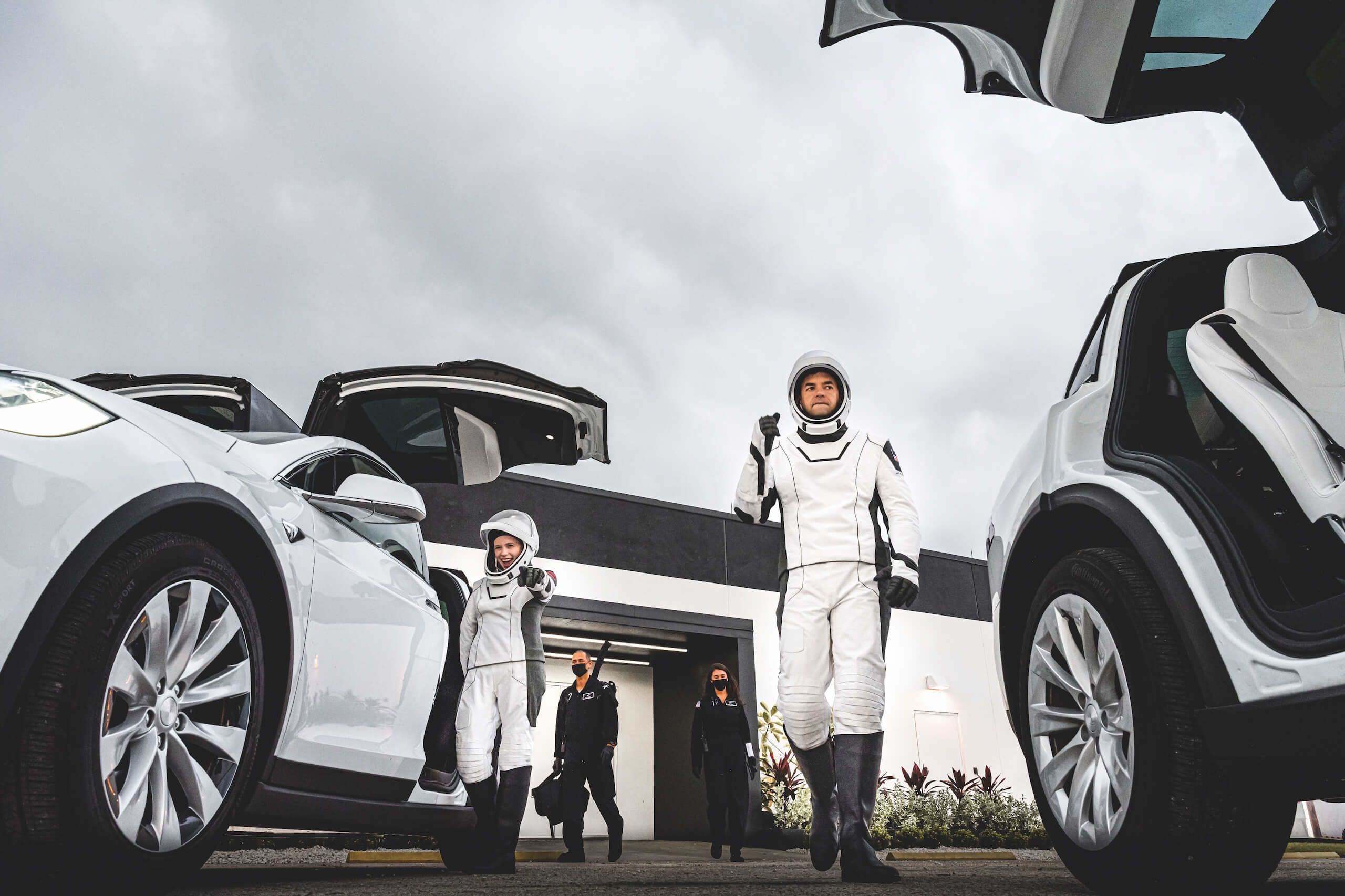
For paying customers like Beattie – who had purchased his spaceflight with Virgin Galactic in the early 2000s – those first missions marked the beginning of realising his own dream of space.
“Going to space was the only thing I’ve ever really wanted to do in my life! Since Neil and Buzz walked on the moon, since I wrote a high-school project about the Space Race, everything I ever did was for the purpose of nudging me closer to fulfilling that dream. Would I do it again? In a heartbeat.”
For others who have since flown, the missions represent new ways of conducting science. “The primary research we’re involved in for my flights is characterising how well the Virgin Galactic spacecraft can do at imaging astronomical objects,” explains scientist and engineer Alan Stern, who led the NASA robotic mission New Horizons to Pluto and who flew to space aboard Virgin Galactic in 2023.
“We are opening up access to new ways of getting data sets at a much lower cost than we ever could before. As the number of flights increases significantly so will the benefits to space research and space science.”
"We are opening up access to new ways of getting data sets at a much lower cost than we ever could before. As the number of flights increases significantly so will the benefits to space research and space science."
Axiom’s fourth launch to the International Space Station, 25 June to 15 July 2025, took four crew, a combination of private paying and national astronauts, to conduct a raft of scientific experiments and demonstrations.
In September 2024, the near five-day Polaris Dawn mission with SpaceX, again funded by Isaacman, saw the first private spacewalk and helped set the current record for the number of people simultaneously in orbit at 19 (four aboard Polaris Dawn, nine aboard the International Space Station, three aboard a Russian Soyuz and three aboard China’s Tiangong space station).
Each mission – even those taking tourists – pushes our understanding of what is possible that little bit further.
The Polaris Dawn mission crew and Jared Isaacman IMAGES: POLARIS PROGRAM: JOHN KRAUS
For Proctor, who had narrowly missed out on being selected as a NASA astronaut in 2009, her selection to fly aboard Inspiration4 – after entering an online competition to be a part of the four-person crew – saw a different moment of reckoning.
“Inspiration4 was historically significant because it enabled me to be the first artist to go to space along with being the first woman commercial spaceship pilot. My hope for the future is that we continue to strive for a just, equitable, diverse and inclusive space for all of humanity.”
But despite the leaps forward, there has been criticism. From online debates over what defines a professional astronaut or a space tourist, through to mainstream concerns that some missions are out of touch with the challenges and inequality on earth.
No great endeavour will come without debate, but there is also a need for responsibility to communicate why what is happening now matters, but also to listen to the disquiet. For us as a species to truly succeed in this next step – leaving the cradle of our earth – we need to do so as one.
Our exploration of space is greater than any one individual, company or country. Doing this is perhaps the next big challenge being faced.
Among those who have flown is Ed Dwight who, aged 90 at the time of his space flight with Blue Origin in 2024, is the oldest person to have ever gone to space.
His friend, Livingston Holder, gazed on from the launch site. “Getting to watch him take off and land and come out of the capsule beaming with enthusiasm and excitement allowed me to experience space flight through him.”
Ed Dwight, at 90 years old, is the oldest person to go to space. Livingston Holder, founder of Radian Aerospace IMAGES: BLUE ORIGIN
Among those who have flown is Ed Dwight who, aged 90 at the time of his space flight with Blue Origin in 2024, is the oldest person to have ever gone to space.
BLUE ORIGIN Ed Dwight, at 90 years old, is the oldest person to go to space
BLUE ORIGIN Ed Dwight, at 90 years old, is the oldest person to go to space
His friend, Livingston Holder, gazed on from the launch site. “Getting to watch him take off and land and come out of the capsule beaming with enthusiasm and excitement allowed me to experience space flight through him.”
BLUE ORIGIN Ed Dwight and Livingston Holder, founder of Radian Aerospace
BLUE ORIGIN Ed Dwight and Livingston Holder, founder of Radian Aerospace
In 1961 Dwight, at the direction of President Kennedy, was the first African American to enter the Air Force Training programme from which NASA selected astronauts but was controversially not selected. “I thought I really didn’t need this in my life. But now (I realise) I needed it in my life. Everybody needs to do this,” he said on his return to Earth. For Holder, watching Dwight gave him hope for his own space ambitions. “Would I go? Heck Yes! Ed was 90 when he flew so we have time, but we must hurry.”
UNIVERSAL IMAGE GROUP VIA GETTY IMAGES President Kennedy in 1962 declared “we choose to go to the moon”
UNIVERSAL IMAGE GROUP VIA GETTY IMAGES President Kennedy in 1962 declared “we choose to go to the moon”
Perhaps the greatest unifier for this new type of space travel, will come from the stories of people who beat the odds, of those who were overlooked and the underdog who dared to dream a once impossible dream.
As for the future? Holder believes, “the future of space is as limitless as space itself.” Over the coming years and decades, as the cost of getting to space comes down, there will be bolder and more ambitious missions, as well as more science and ideas able to access the unique environment.
Just as the internet in the 1990s and 2000s enabled kids in their dorm rooms to create world-changing companies, the same will start to happen with space. Companies we cannot even begin to imagine, will soon one day be part of our everyday lives.
Of course, with any new frontier, lives will be lost, fortunes will be lost and there will be many failures. But it is that desire to push forward, to seek what is over that next hill and explore the unknown that makes us human and has built the world we live in today.
Just as the internet in the 1990s and 2000s enabled kids in their dorm rooms to create world-changing companies, the same will start to happen with space.
Shostak believes that, a thousand years from now, the twenty-first century will be remembered “as an inflection point for humanity… when we finally ended our confinement to one celestial body and spread out, at least as far as our solar system.”
As entrepreneurs and pioneers eye a sustainable presence on the moon and human missions to Mars and beyond, perhaps science fiction should be renamed science prediction?
“The future of space is as limitless as space itself”
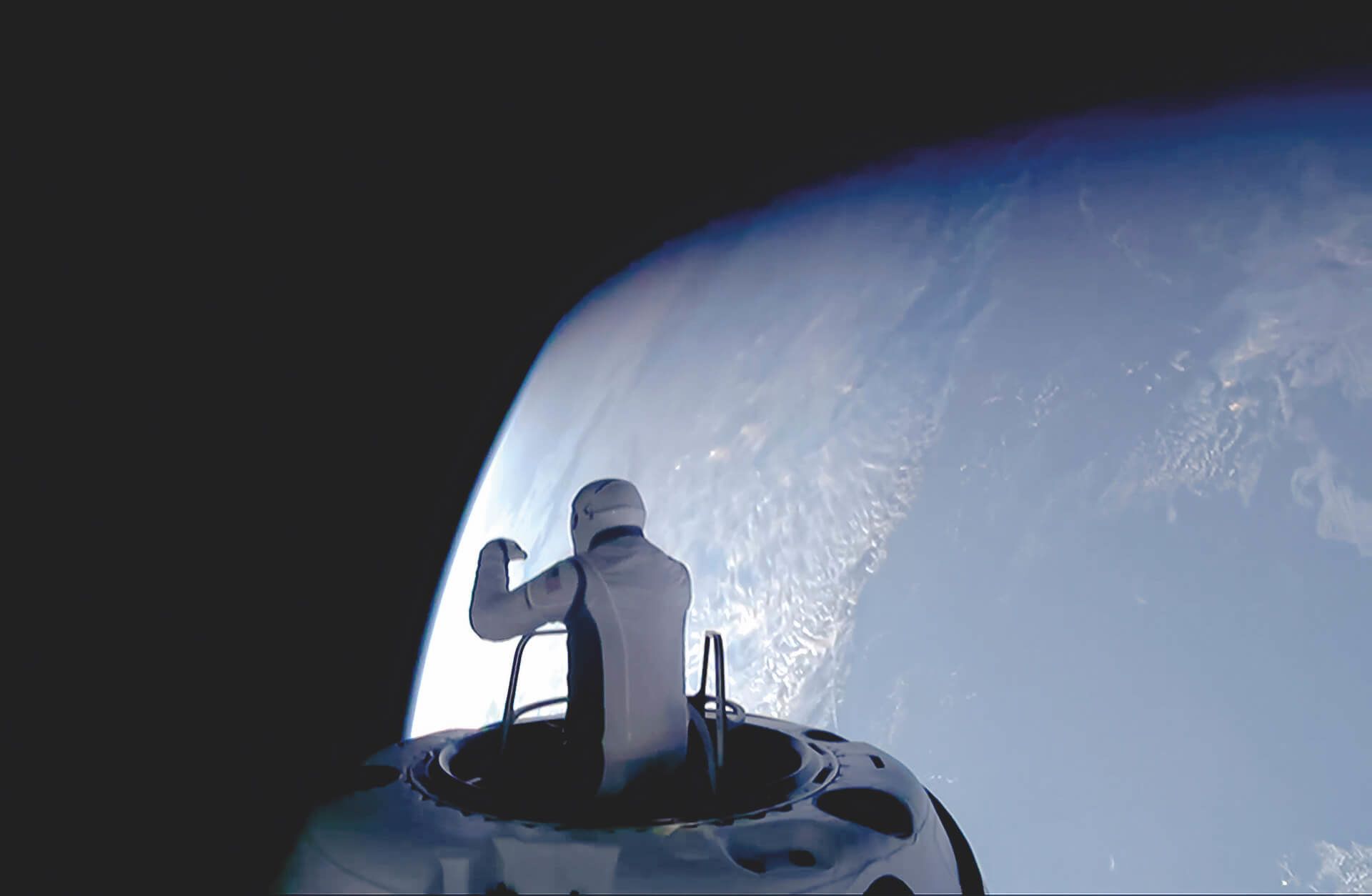
First published in the October 2025 issue of BOAT International. Get this magazine sent straight to your door, or subscribe and never miss an issue.



